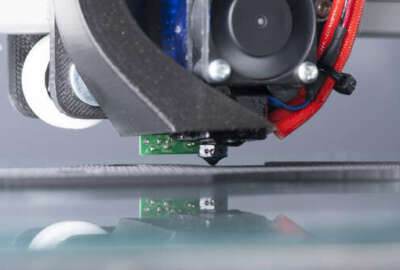VA sees growing 3D printing network as ‘new frontier’ for agency’s medical research
A 3D printing network is growing within the Department of Veterans Affairs, which the agency sees as both a time saver for its providers but also a game changer for...
The first time doctors at the Department of Veterans Affairs realized they could use a 3D printer to create a life-sized, realistic model of a patient’s diseased heart valve, Dr. Beth Ripley and her colleagues knew it was a gamechanger.
“It was the same sort of reaction for every one else,” she said in an interview. “We actually took the heart valve and ran down the hospital hallways and handed it to as many as cardiologists and doctors we could find. Everyone had the same reaction. There’s something really magical about it almost, to know that you’re holding in your hand an exact replica of something that’s in a patient.”
The first 3D-printed heart valve served as a catalyst for VA’s integrated virtual printing network, which began at the VA Puget Sound Healthcare System in early 2017. Three VA hospitals had 3D printing labs then; the network has recently grown to 20 hospitals.
Ripley chairs the Veterans Health Administration’s 3D printing advisory committee. She’s also a senior fellow within VHA’s Innovation Ecosystem, an organization within the department designed to find and pilot promising best practices within one or two VA hospitals and spread them across the enterprise.
“VA, as the largest integrated healthcare system in the U.S., really has an opportunity to define how 3D printing is going to be used in medicine,” Ripley said. “That’s what you’re seeing with the network, and that’s what it’s all about. We are trying to harness all that depth and diversity throughout our hospital system to really advance and innovate in this space.”
Ripley and her colleagues saw an opportunity to cut down the time senior surgeons spent reviewing a scan of a patient’s diseased heart valve, for example. Ripley and her team used those images to create a 3D-printed model of the exact heart valve.
“It was amazing to see how the surgeon just grabbed that print, lifted it up in his hands, literally turned it over and [in] maybe 15-to-20 seconds sat down and said, ‘I got it,'” Ripley said. “That was in comparison to looking at images for 20 or 30 minutes maybe two or three times. That’s when I really knew that there was something there.”
In this particular case, the VA printing lab will give the 3D model to an interventional cardiologist and the surgeon, who will discuss whether the veteran could be a candidate for a simpler surgery or less invasive procedure. VA doctors take the 3D printed model to their patient, so the veteran can better understand the procedure.
“It’s really hard for them to understand some of the complexities in the anatomy on those cases,” Ripley said. “That’s what really drove me to figure out a better way to show imaging data to surgeons.”
Surgeons will bring the 3D-printed model into the operating model. It serves as a guidepost throughout the procedure, Ripley said.
Meanwhile, other VA hospitals had started to make similar discoveries.
“Similar iterations were happening across the country, with other people like me making their own revelations about how 3D printing could work,” Ripley said. “Each one of us started working on it. Soon we found each other, and that’s how the 3D network first started.”
Since then, VA’s network is exploring other uses for 3D printing beyond pre-surgical planning.
The department’s occupational therapists are also using 3D printers to make hand orthotics and other assistive technology, which they can customize based on the patient’s preferences. VA can keep the digital blueprints for these orthodics to quickly manufacture replacements.
Today, the network is exploring how it can 3D-print actual biological tissues that can be placed within a patient.
The goal, Ripley said, is to make living, vascularized bone that could be placed back inside a patient. The VA Ann Arbor Health Care System in Michigan is taking the lead on this research, which calls for making a prototype of a 3D-printed artificial lung. Ripley described this project as the next frontier for the department’s 3D printing work.
The network itself gives Ripley and her colleagues a place to talk to each other about their findings and share resources.
“The next thing for the network is to think about how we provide 3D-printed services to veterans who receive care from hospitals that don’t have 3D printing currently, because our goal, again, is to make sure that this technology benefits all 9 million patients within our network, regardless of what hospital they receive care from,” she said.
Copyright © 2025 Federal News Network. All rights reserved. This website is not intended for users located within the European Economic Area.
Nicole Ogrysko is a reporter for Federal News Network focusing on the federal workforce and federal pay and benefits.
Follow @nogryskoWFED
Related Stories

Marines have 24/7 3D printing parts office at their fingertips




